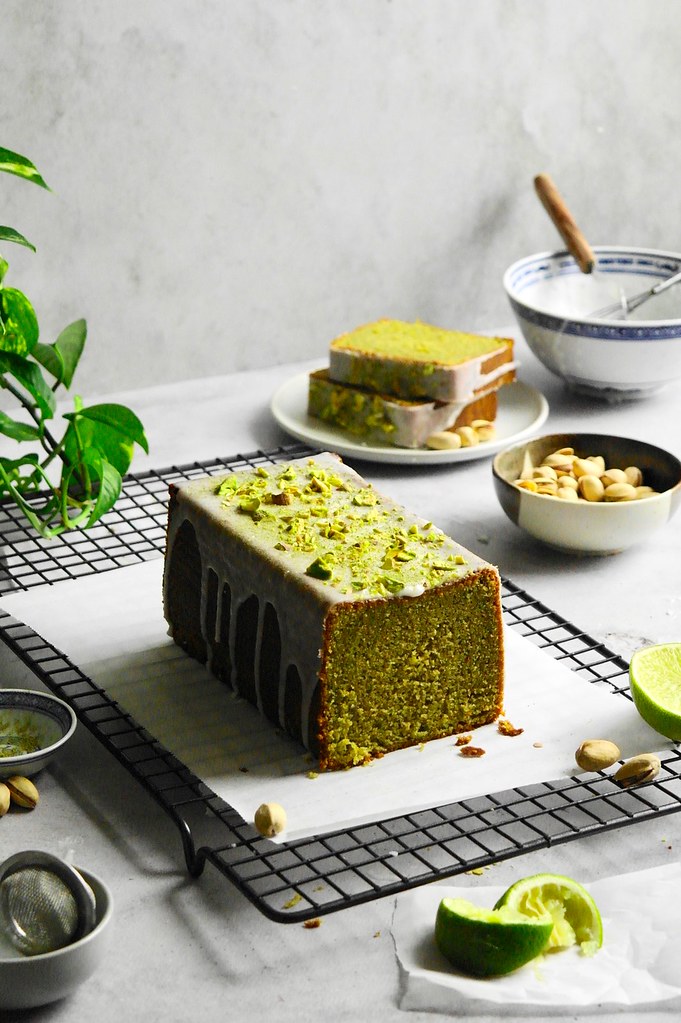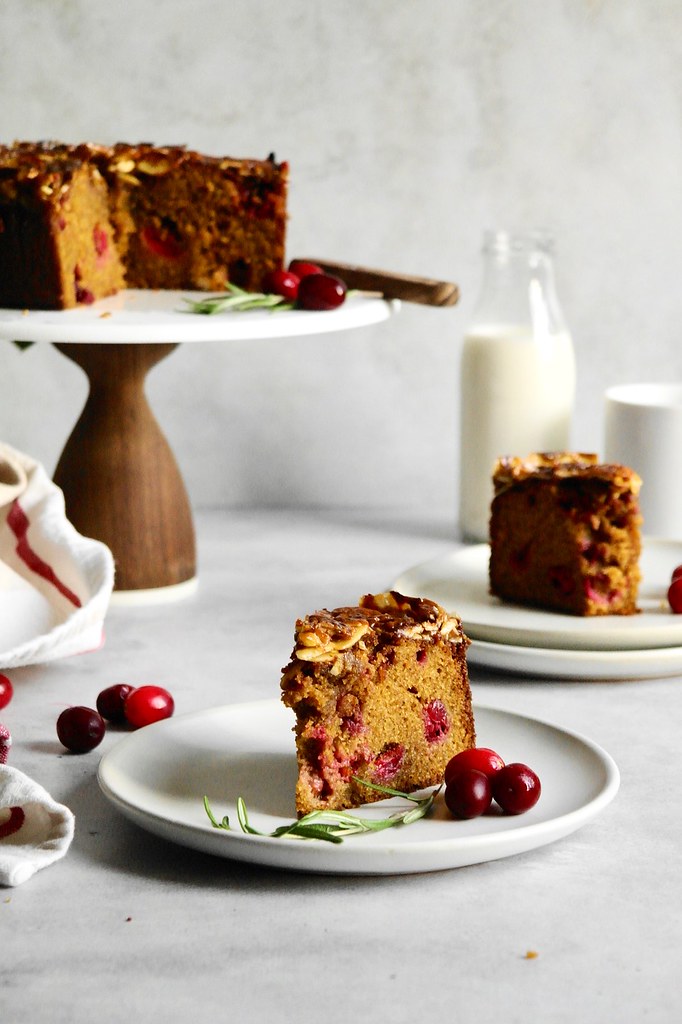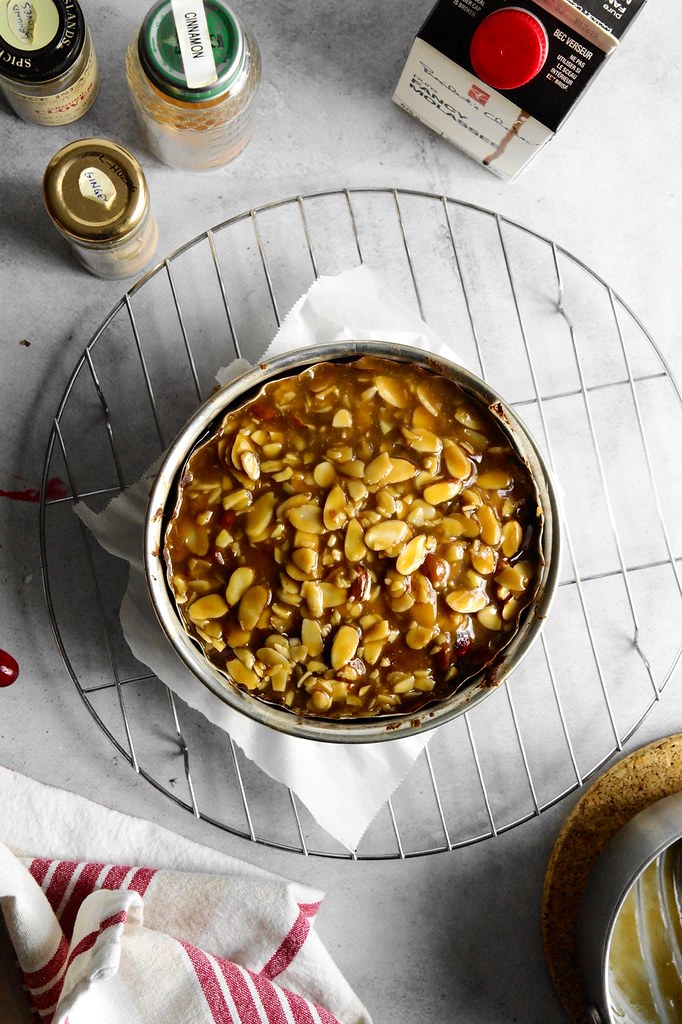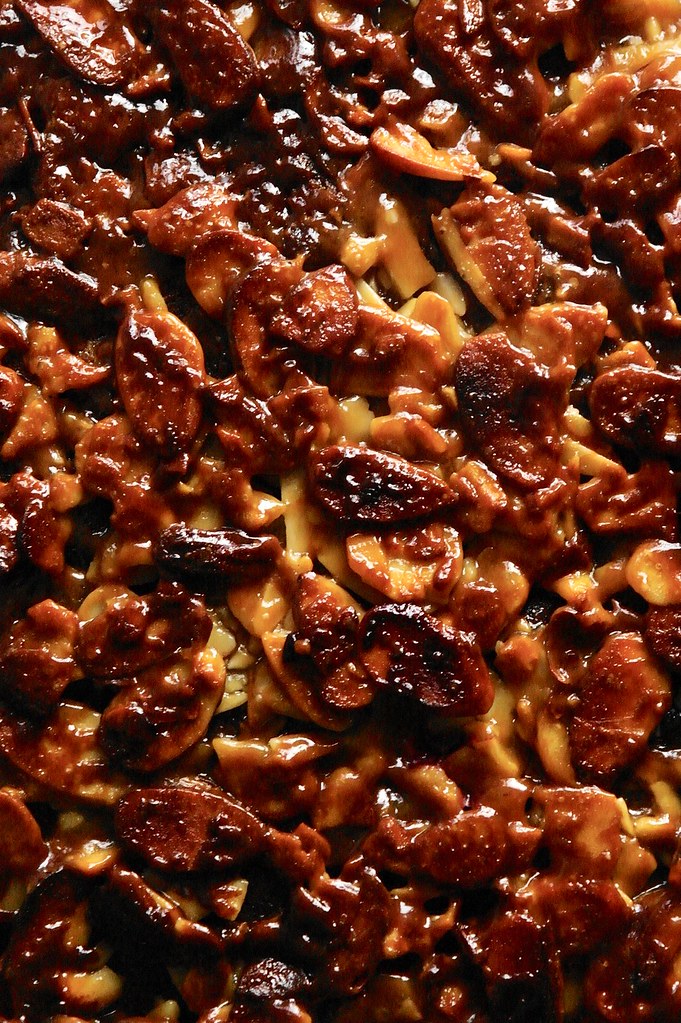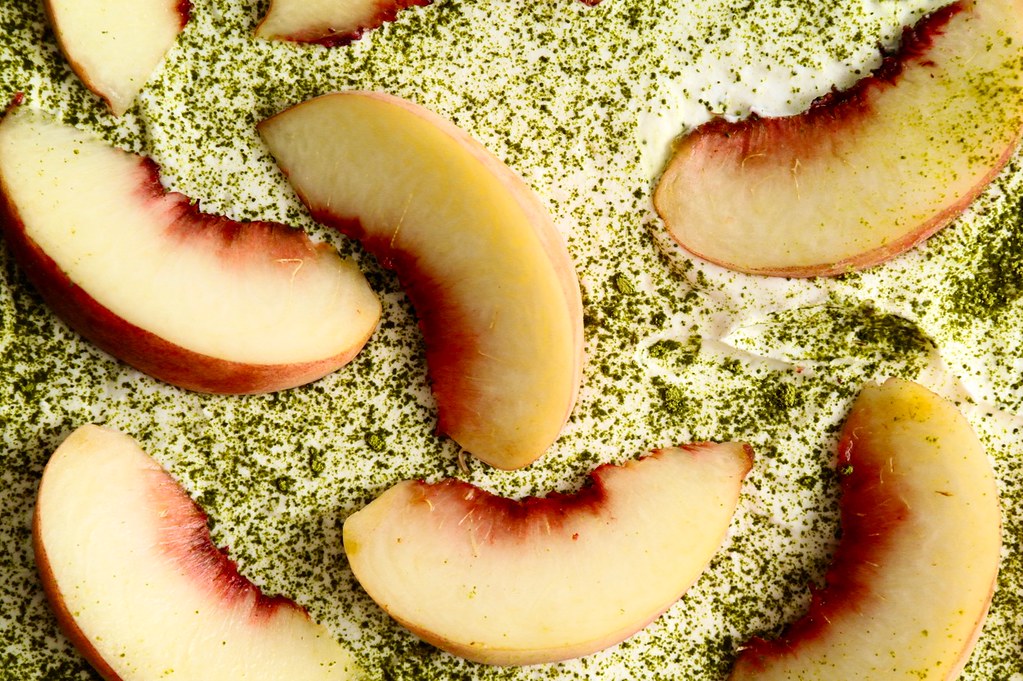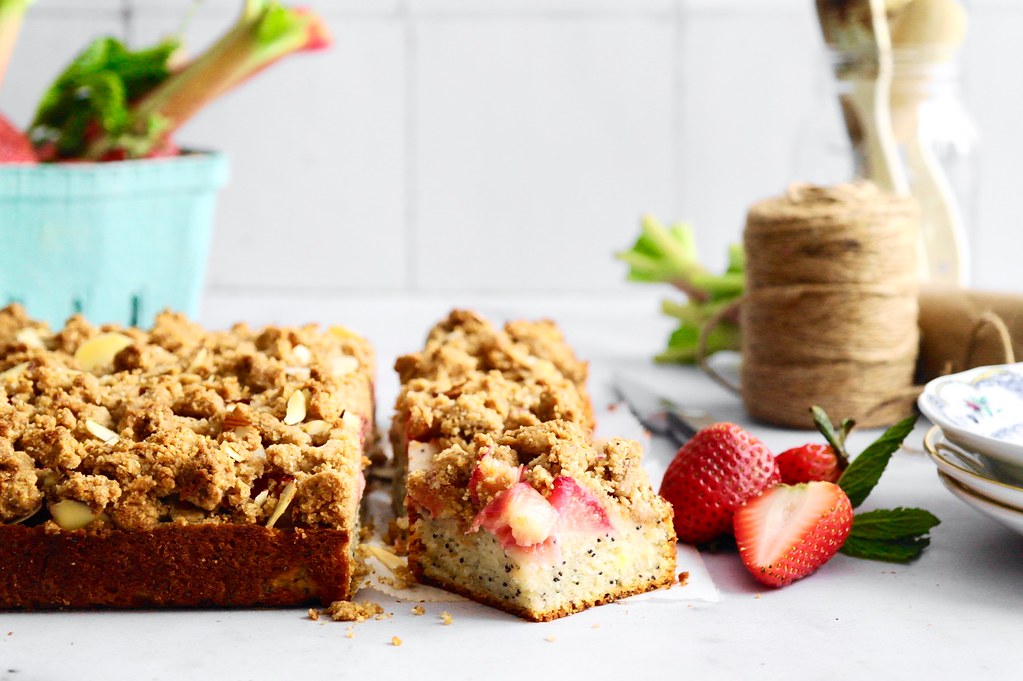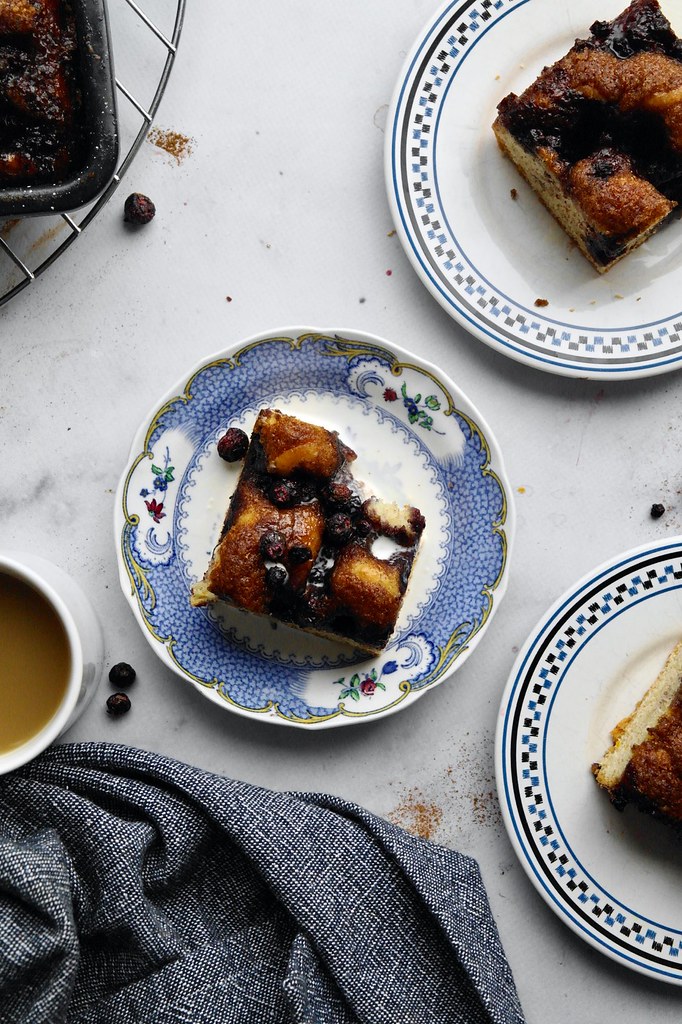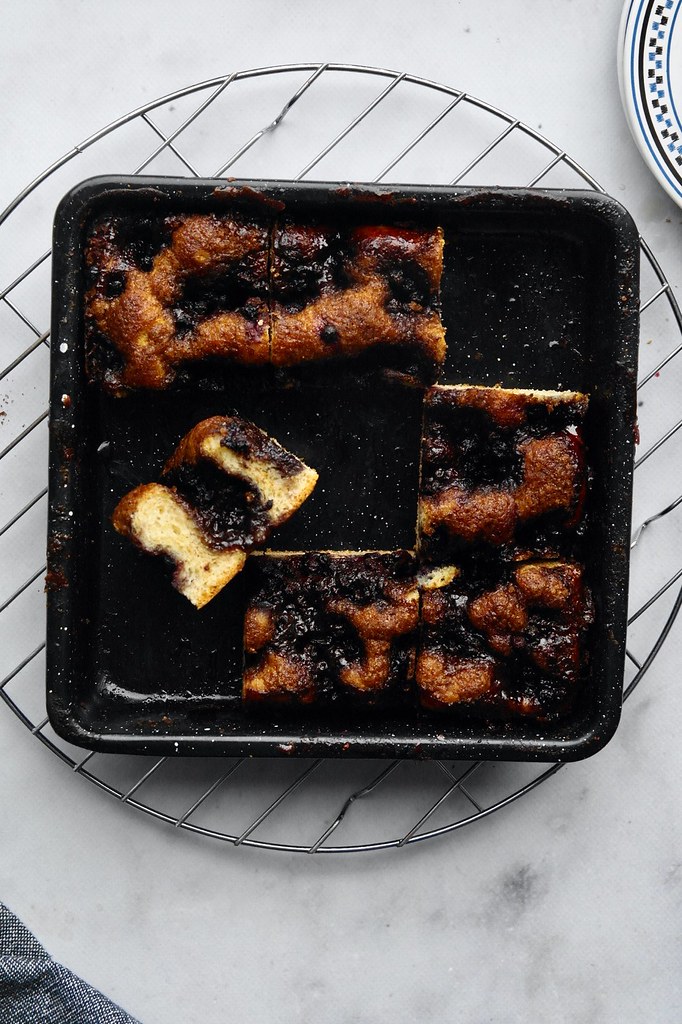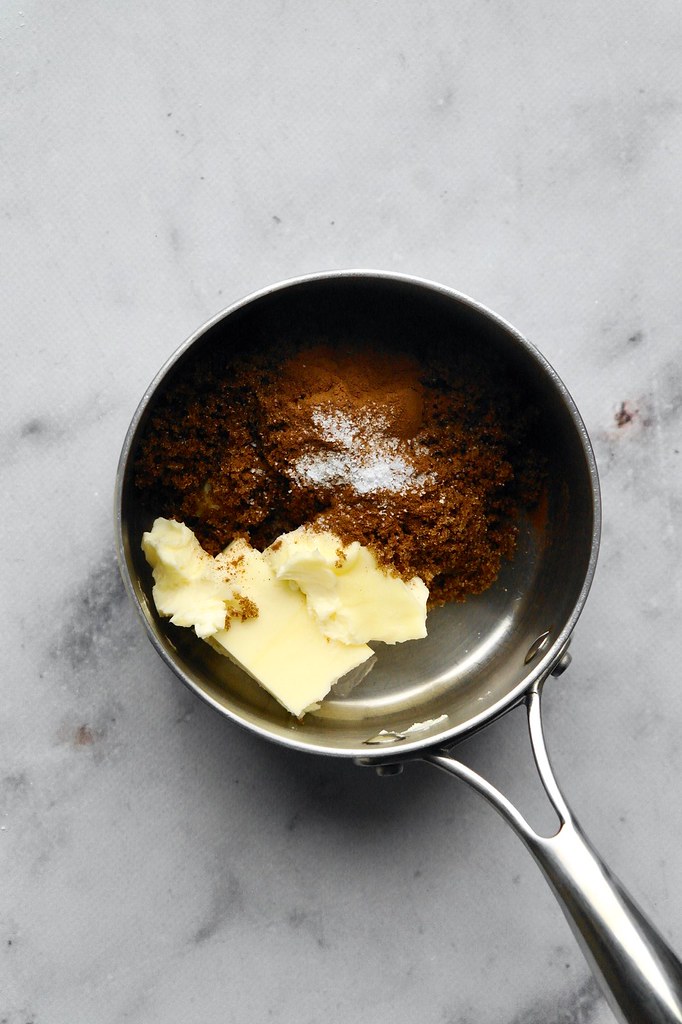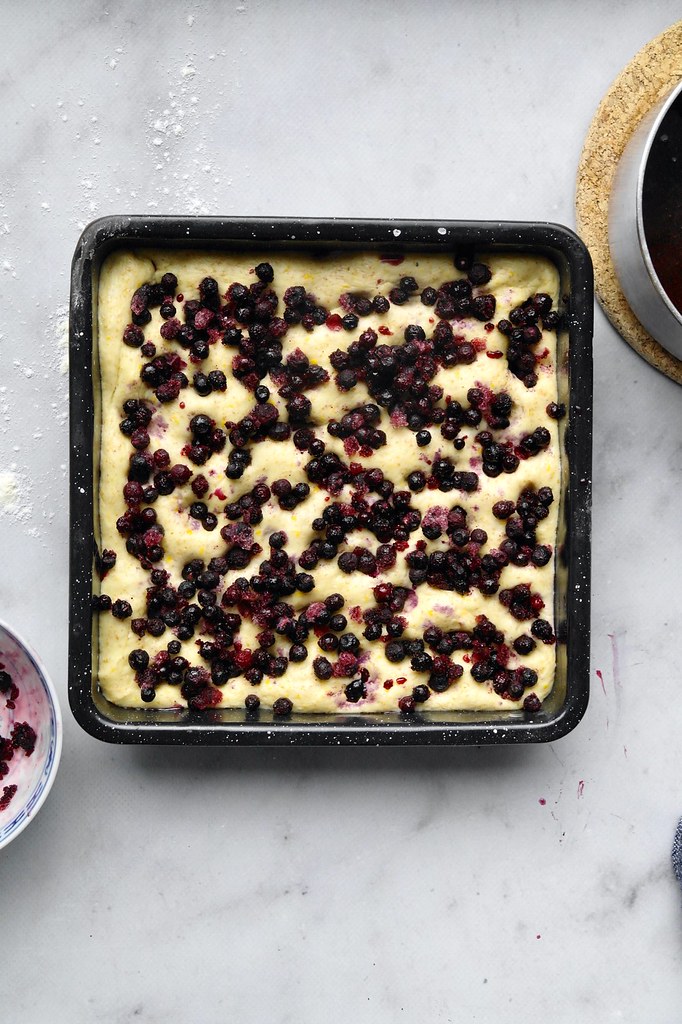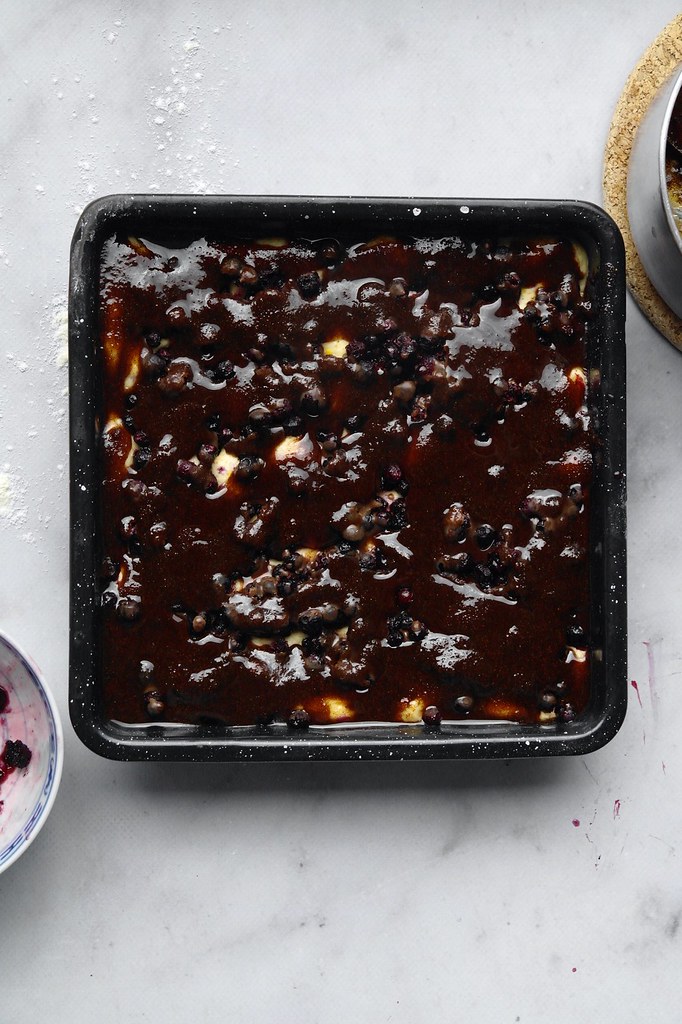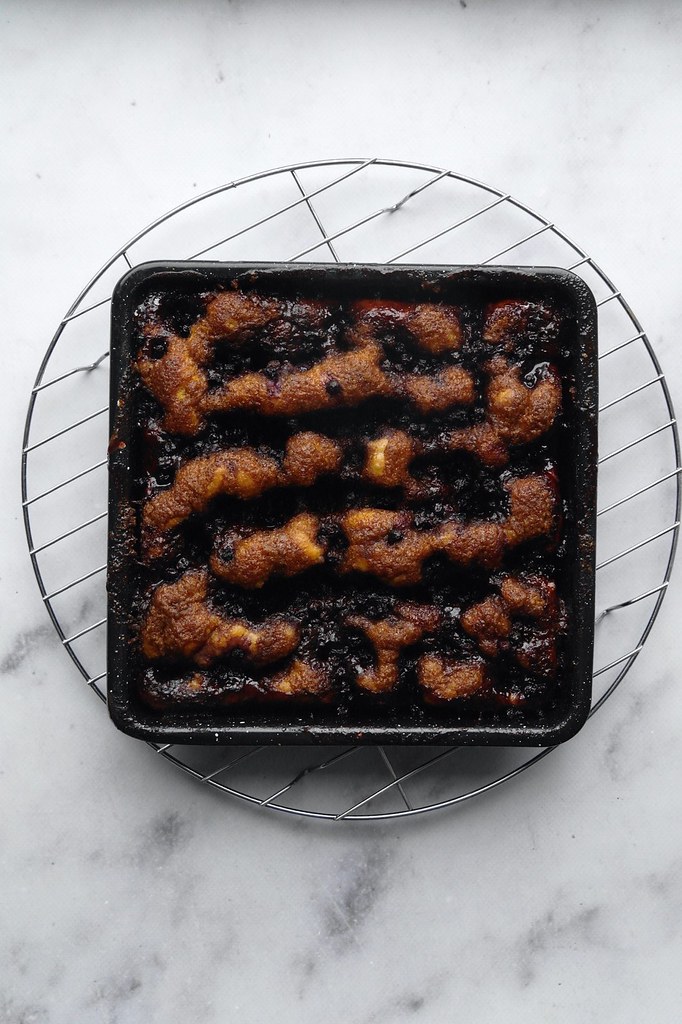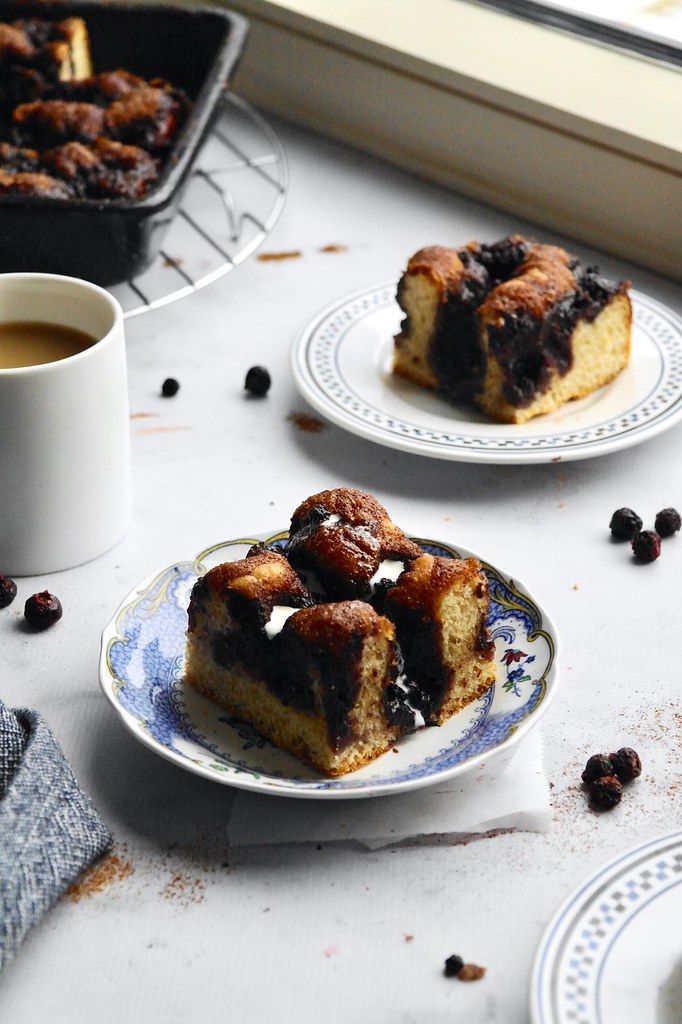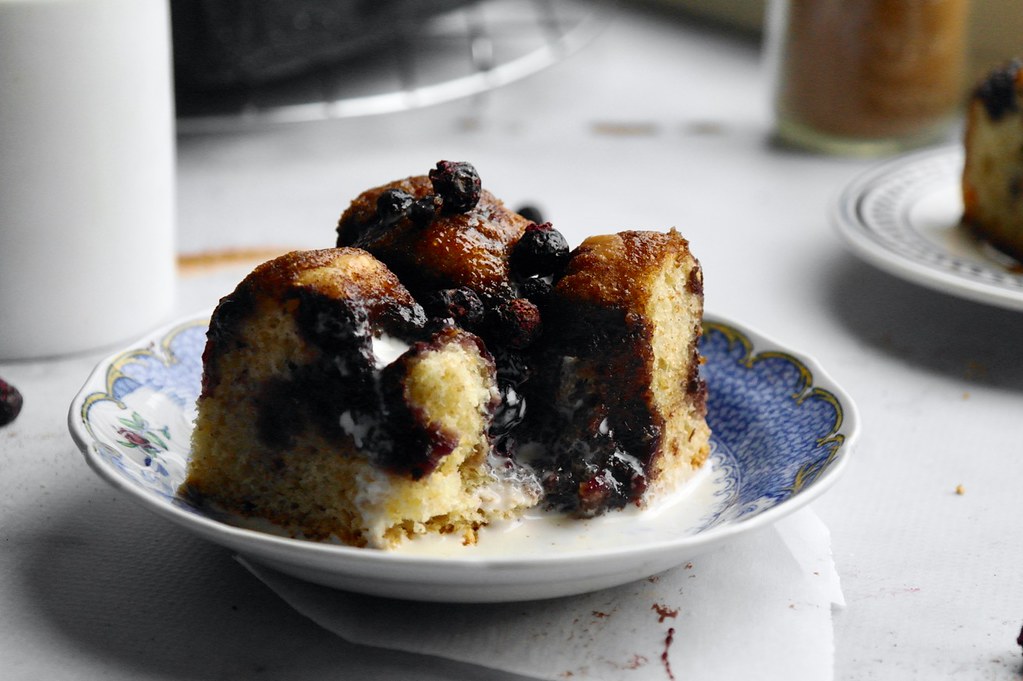
While neatly packaged in an unassuming loaf cake form, I consider this a carrot cake deluxe. It has a drømmekage-inspired topping of caramelized coconut, while a cream cheese filling runs through the middle. It’s sort of two icings, one crispy/chewy and the other creamy, in one cake for the best of both in a handy slice you can eat by hand.
Drømmekage is a Danish sponge cake topped with a coconut, butter and sugar mixture that gets broiled until caramelized. It’s a coconut cousin of toscakake/toscakaka, a sponge cake topped with a caramelized almond topping (speaking of, there are two toscakake variants on the blog – a festive cranberry gingerbread number and an apple-packed gateau invisible). Here I’ve borrowed the coconut topping for carrot cake, a departure from the usual drømmekage, but a pairing that works very well.
The filling is a super simple, lightly sweetened cream cheese loosened with a bit of heavy cream to keep it a bit softer and creamier, and reminiscent of a cream cheese icing. I’ve kept the carrot cake itself mildly sweetened to balance the sweetness of the topping, plus it’s made with whole wheat flour for better flavour!
While I’ve enjoyed dolloping drømmekage and toscakake toppings on different sorts of cakes, I’ve found it doesn’t work equally well on everything. The first thing to consider is how level the top of the cake is; if the cake is very domed, the filling can slip from the top of the cake and collect around the edges during baking, and furthermore, is more prone to uneven browning. This carrot cake has minimal doming so the filling can spread in a flat layer overtop of the cake. It’s normal for many cakes to dome as the edges of the cake firm up before the middle, restricting their rise. Obtaining a level cake surface in this case is aided by two things: first, the cream cheese filling results in less height of batter (and thus less rise) in the centre of cake compared to the edges. Secondly, I give the differential batter height a bit of a helping hand by spreading the batter higher on the sides of the cake than the middle.
However, even when you have a flat-topped cake, sometimes the topping has more difficulty staying adhered to baked cake, a problem I’ve had off and on with this carrot cake version. I found that sprinkling the top of the cake with a bit of shredded coconut helps create a more grippy? surface for the caramelized topping.
With the flat top crust, this cake looks best baked in a straight-sided pan, such as the pullman loaf tin I’ve used here, as opposed to a flared loaf tin. I’ve tested this cake in a typical loaf tin as well though: use a 2/3 recipe of the cake and filling, but keep the amount of topping the same (more details are in the recipe notes). This smaller cake bakes up fluffier as the cake isn’t quite as large and weighted down!

drømmekage carrot loaf
Carrot cake base adapted from Cooks Illustrated carrot cake, drømmekage topping adapted from The Milk Street Cookbook edited by Christopher Kimball. This is a very mildly sweet carrot cake and filling to balance the sweet drommekage topping.
Note: to make this cake in a more standard loaf tin – use a 2/3 recipe of the filling and cake (it’s all multiples of 3 so the math is easy, I promise!), but keep a full recipe of the topping. Bake the cake for closer to 45 minutes.
special equipment: a 9x4x4″ pullman tin. see note above if using a more standard loaf tin
cream cheese filling
- 150g block cream cheese
- 22g granulated sugar
- pinch salt
- squeeze lemon juice
- 15g whipping cream
carrot cake
- 240g whole wheat flour
- 2 1/4 tsp baking powder
- 2 1/4 tsp cinnamon
- 1/4 tsp ground nutmeg
- 1/8 tsp ground cloves
- 1/2 tsp kosher salt
- 375g carrots, peeled and finely shredded – use the finer panel on your grater as more thinly grated carrots give the cake a finer texture
- 150g brown sugar
- 3 large eggs
- 150g oil
- 75g greek yoghurt
- 1 1/2 tsp vanilla extract
- small handful unsweetened shredded coconut
drømmekage topping
- 45g milk
- 75g brown sugar
- 40g butter
- 1/4 tsp kosher salt
- 60g unsweetened shredded coconut
Begin by mixing together the filling. Cream together all ingredients until smooth. Transfer to a piping bag with a ~1.5cm diameter opening. Set aside.
For the cake, preheat the oven to 350F. Butter a loaf tin and line with a parchment paper sling.
Whisk together the flour, baking powder, spices and salt and set aside. Whisk the sugar, eggs, oil, yoghurt and vanilla extract together in large bowl. Add the flour and shredded carrots and mix until combined.
Dollop about half the batter into the loaf tin and spread into an even layer. Pipe the cream cheese filling over the batter, leaving a ~1.5cm border without filling to make sure it is encased within the cake. Scrape the remaining batter overtop and spread into an even layer. To help ensure the cake has a relatively flat surface, use a small offset spatula to spread the batter a little bit higher along the edges of the cake pan (the edges set first and don’t get the chance to rise as much as the centre, so this step offsets the resultant doming a bit). Sprinkle with a small handful of shredded coconut.
Bake for about 60-70 minutes or until browned and springy. An inserted skewer should come out clean and free of batter, though there may be some cream cheese on it.
Now prepare the topping. Place the milk, brown sugar, butter and salt in a small saucepan. Bring the mixture a boil and boil for 4 minutes. Remove from the heat and stir in the shredded coconut. Spoon the mixture over the baked cake and spread into an even layer.
Place the cake back in the oven and turn the broiler on. Broil the topping for 2-5 minutes, rotating every minute or so, until the topping is browned and caramelized. Let the cake cool in the pan on a wire rack for 10-15 minutes before sliding a knife around the edges to loosen them and lifting out the cake via the paper sling.
Let the cake cool completely before slicing. I love this cake the same day when the topping has a crisp caramelized crust overlying the chewy coconut! To make it easier to slice through the brittle top crust, use a serrated knife and saw back and forth.
























